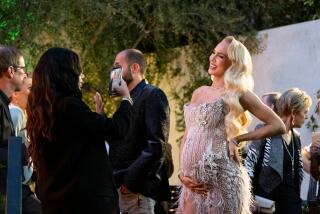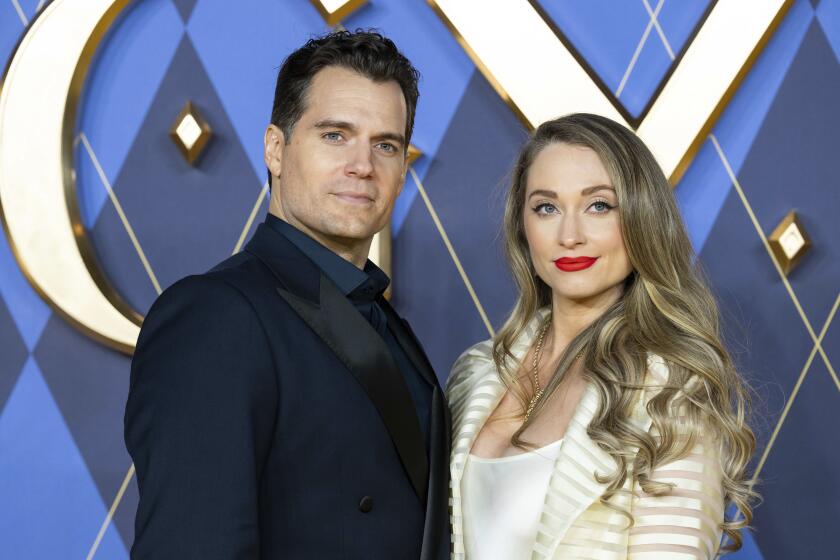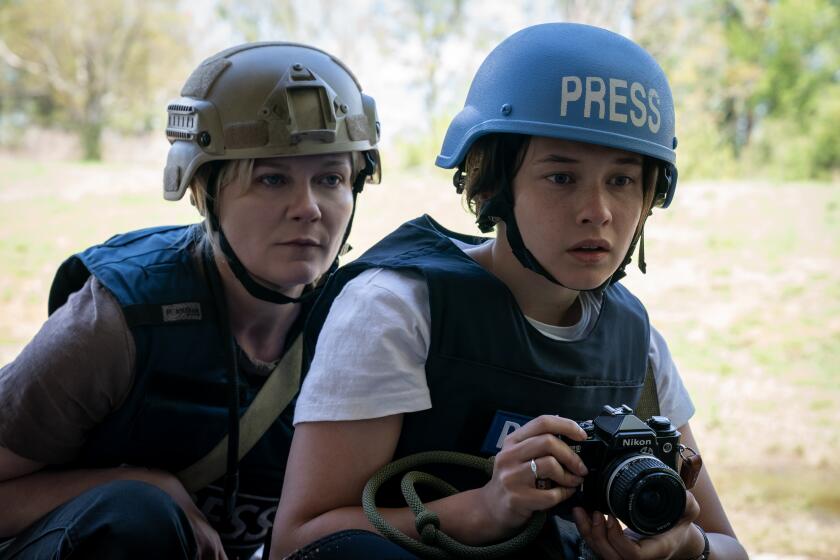Honeymoon with ‘Twilight’ director Bill Condon
Sequestered inside a Hollywood studio in late September, director Bill Condon, putting the finishing touches on the latest film in the blockbuster “Twilight” franchise “Breaking Dawn — Part 1,” asked a technician to reduce the heavy beats thundering across the soundtrack. On a screen, terror dawns on the face of a Brazilian housekeeper as she realizes that the young woman standing in front of her, newly married 19-year-old Bella Swan (Kristen Stewart), is carrying the child of her vampire husband Edward Cullen (Robert Pattinson).
“Too melodramatic,” Condon said of the drums.
In the “Twilight” universe, melodrama isn’t a bad word. It’s an innate part of the expansive saga of high school student Bella, who becomes caught up in a supernatural love triangle with vampire Edward and her best friend, the werewolf Jacob Black (Taylor Lautner). Adapted from the bestselling novels from author Stephenie Meyer, the first three films in the franchise earned close to $800 million in North America — millions more around the world — and the series’ popularity doesn’t seem to be on the wane.
Leading up to the premiere of “The Twilight Saga: Breaking Dawn — Part 1,” fans held a four-day-long vigil at the Nokia Theatre L.A. Live, and weekend screenings for the film, which opens in theaters Friday, have been sold out for weeks.
Summit Entertainment, the studio behind the films, has doubled down on the finale, breaking Meyer’s book into two installments — just as Warner Bros. did with the last chapter in its “Harry Potter” franchise — upping the production budgets and paying the film’s three leads $25 million each for the “Breaking Dawn” movies.
For Condon, the Oscar-winning writer-director whose résumé includes low-budget horror (“Candyman: Farewell to the Flesh”), offbeat biopics (“Gods and Monsters,” “Kinsey”) and high-profile musicals (“Dreamgirls”), tackling “Twilight” seemed an appealing challenge. He was attracted to the idea of making a movie that was “part melodrama, part horror film,” and he was fascinated by the movies’ massive following, though “Breaking Dawn” required him to navigate some outlandish story beats — an ecstatic sex scene, a grotesque birth and a telepathic conversation among CG werewolves among them.
Directing a “Twilight” movie can be a risky proposition. Each of the films so far has featured a different name on the director’s chair — Catherine Hardwicke directed 2008’s “Twilight,” Chris Weitz, 2009’s “New Moon,” David Slade, 2010’s “Eclipse” — and none has yet to garner glowing reviews across the board. All, however, have been scrutinized by a reverential fan community devoted to the source material and typically less than receptive to even minor recalibrations to Meyer’s texts.
Condon, who also is directing the second half of “Breaking Dawn,” due out next year, says he was aware of the career risks inherent in taking on such a populist, often critically maligned series.
“In some ways that was part of the fun of it,” Condon said. “There is something liberating about it. Plus, I really liked the story.”
The story, this time around, centers on Bella’s nuptials to Edward — she wants to be a vampire like him, his condition is that they get married first — and the life-threatening pregnancy that unexpectedly results from their first bed-splintering honeymoon encounter.
To bring such heightened material to the screen, Condon said he looked to both Vincente Minnelli and Alfred Hitchcock, hewing to tradition for Bella and Edward’s wedding and honeymoon, skewing more graphic when depicting Bella’s pregnancy, which is destroying her from the inside out. Through a combination of prosthetics and CG, Condon transforms his dewy brunet into a gaunt, skeletal version of herself.
“She needed to look like she’s dying or the story doesn’t make sense,” Pattinson said. “It was great that he went there.”
Pattinson says he felt a kinship with Condon from the moment the director came to visit the 25-year-old actor while he was shooting the period love story “Water for Elephants” in Los Angeles.
“I had my hair cut really short, and he said, ‘Oh, you should have your hair like this in the ‘Twilight’ movies.’ I thought, ‘OK, I already like you,” Pattinson said with a laugh. “Especially since so many people worried about my hair. It was all they cared about. The hair and a six-pack.”
Stewart too praised Condon.
“I wanted a director that I could trust enough that I could completely clear my head and know that all my preparation was going to find its way into my body,” Stewart said. “I didn’t feel that I was always looking over his shoulder making sure he was capturing it, or looking over his shoulder making sure he wasn’t missing some aspect of the book that I knew about and he didn’t. I already knew that we were on the same page.”
Condon had a particularly unique approach to Bella and Edward’s big love scene, which for fans is a culmination of years of repressed desire. Rather than do a straight-away shot of the young couple’s first night in bed together, he opted to show the majority of the scene in flashback through Bella’s memory of the encounter.
“It’s the reason I’m directing the movie,” Condon said of the sequence. “To me the memory of first sex — savoring the smell, the taste and the touch was more interesting. And it plays with people’s expectations. You don’t get much in the beginning and [people may think], ‘Oh, that was it?’ To set up a disappointment and then give them more seemed like fun.”
His decision seemed to go over well with the 7,000 people in the audience at the Nokia Theatre Monday night, where that soundtrack that Condon had been so carefully fine-tuning two months ago was often drowned out by the sounds of teen girls’ screams. It was a moment Condon says he won’t soon forget.
“It was so exciting to see,” he said by phone the following morning. “The way those fans anticipated the controversy [of the story] even before the characters know what’s happening was amazing. That was a relief.”
More to Read
The biggest entertainment stories
Get our big stories about Hollywood, film, television, music, arts, culture and more right in your inbox as soon as they publish.
You may occasionally receive promotional content from the Los Angeles Times.






